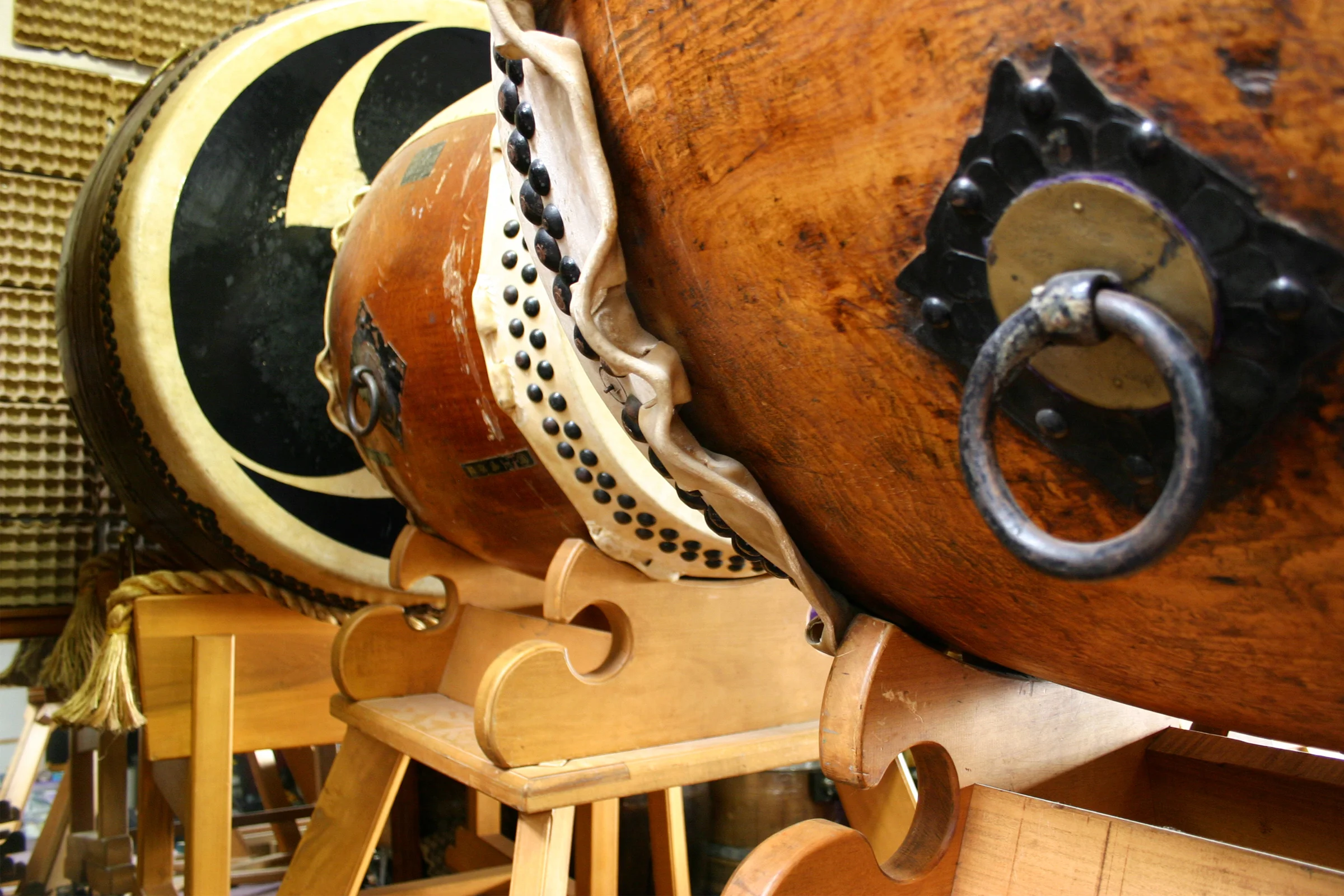HISTORY OF TAIKO
The history of Taiko is interwoven in the fabric of Japanese history. Regarded as sacred since ancient times, the drum was first used to drive away evil spirits and pests harmful to crops. It was believed that by imitating the sound of thunder, the spirit of rain would be forced into action. At harvest time, Taiko was joyfully played in thanks for a bountiful crop.
Today, this spiritual aspect of Taiko has faded with the modernization of Japan. What was once an integral part of daily life is now just a festival relic. However, a cultural renaissance has been taking place in Japan — a rediscovery of native arts. Currently, every school child in Japan knows of Taiko and many corporate events feature Taiko drummers. With the dedication of a small number of Taiko masters and enthusiasts, it has been again popularized and is played in festivals throughout the world.
Taiko drums are handmade by professional drum makers in Japan. It is believed that the spirit of the trees from which the wood came, as well as the spirit of the builders of the drum, and even the performers who played them over the years come to embody each drum. The sound of today’s performance comes from the spiritual bond between the performer and this deep tradition.
Some Taiko groups use antique instruments to produce an ancient sound. Such drums have taken on the qualities of historical and cultural icons and are a priceless window into the past. The prize possession of Taiko Dojo is the one ton O-Daiko drum, which stands over twelve feet high. It is the largest drum in this hemisphere and valued at $500,000.
In the last decade, Taiko enthusiasts, Seiichi Tanaka and the San Francisco Taiko Dojo have redeveloped Taiko from its primitive folk art roots to a powerful, sophisticated synthesis of rhythm, harmony, and body movement. Today, it is a rigorous mental, physical, and martial arts training is combined with musical talent to form a unique, resonant style.

